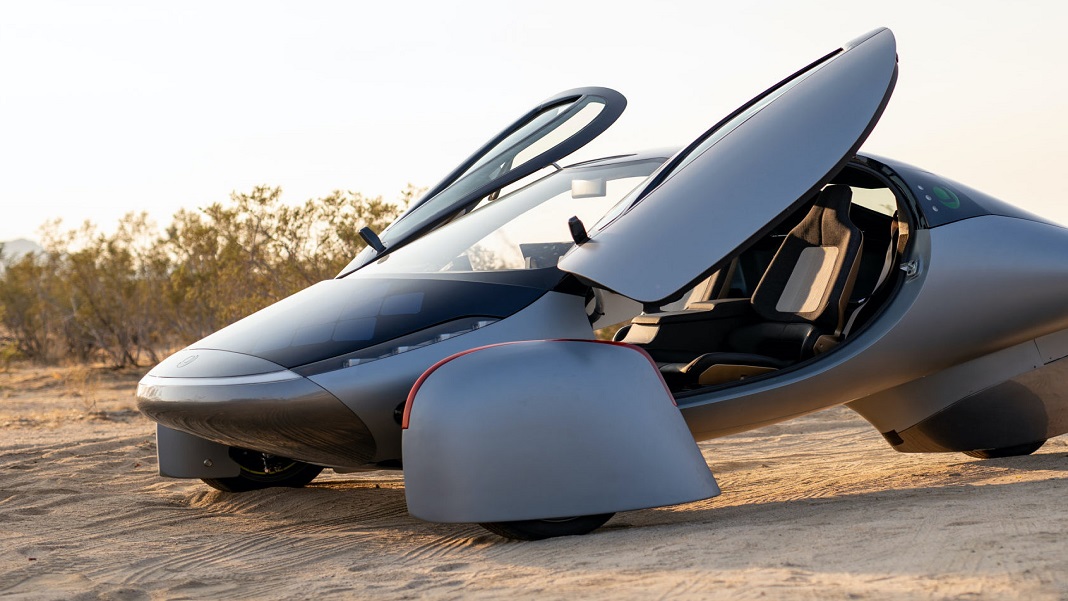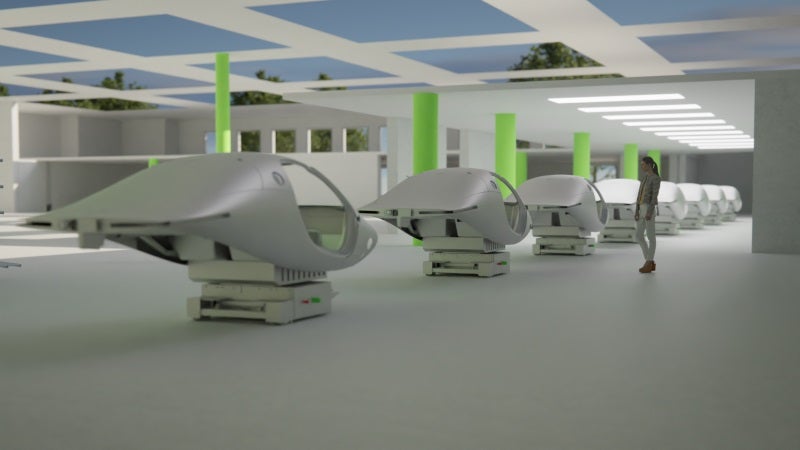
A year and a half ago, San Diego-based Aptera Motors started taking orders for the Aptera, its three-wheeled solar car that resembles a cross between the Batmobile, the Delorian, and a personal-size aircraft. The company quickly sold out multiple models of the car and ended up having to push back the delivery date for many customers. But in a webinar they put out last month, the company announced purchase of a factory to scale up production of their vehicles, which could mean a new era of emissions-free transport is being (slowly) ushered in.
The factory in Carlsbad, California has 200,000 square feet of production space. That’s a lot; for comparison’s sake, Tesla’s flagship factory in Fremont, California was 510,000 square feet (but has been expanded since its initial construction).
Aptera is aiming to produce 10,000 cars by the end of this year, eventually ramping up production to 600,000 cars a year. At the moment, the company says it has over 25,000 orders (some of which may fall through given that placing an order only requires a $100 deposit); but they’re betting demand will rise as drivers of small cars, whether gas or electric, may choose to go solar.

For some it may be the solar technology that’s a deterrent; despite the appeal (both in terms of cost savings and planet-friendliness) of never having to pump gas or plug in, it may be hard to convince drivers who don’t live in sunny places to make the switch. The three-wheeled, flattened-egg style may be a hard sell too, at least until more cars start to look this way.
An interactive map on Aptera’s website lets potential customers input the “sun zone” where they live and the average number of miles they drive per day to get an idea of how often they’d need to plug the solar car into a charging source. The company estimates that people in the sunniest parts of the world who drive less than 40 miles per day could go 11,000 miles a year just on solar power. Those who don’t live in Arizona, Egypt, Chile, Saudi Arabia, and so forth would need to rely much more on the car’s battery storage.
The Aptera has a 100 kilowatt-hour battery pack and can be plugged in to charge just like any other electric car. Its solar roof array is called Never Charge, and there’s also an option to put extra panels on the hood and hatch to add range. The car’s odd shape isn’t just for show; its egg-shaped-yet-angularly-streamlined body gives it a drag coefficient of 0.13 (drag coefficient measures how aerodynamic a car is, and the lower the number, the better; Tesla’s Model 3 has a drag coefficient of 0.23, and Volkswagen’s ID 4 electric SUV clocks in at 0.28).
The car also boasts a “safety cell seven times stronger than steel,” for those worried that its unique design may not hold up well in an accident, and can go from 0 to 60 in 3.5 seconds.
In late May Aptera announced a partnership with Michigan-based RedViking, a manufacturing solutions company that makes robots it calls automated guided vehicles (AGVs). The AGVs are basically platforms on wheels to move heavy parts around the factory floor—but they can transmit information about their position, movement, charging levels, and other diagnostic data, as well as identify obstacles in their path and avoid collisions.
Aptera will use the robots to facilitate vehicle assembly by smoothly getting components where they need to be, with the bonus that the AGV system is easy to adapt or expand over time. One of the most significant details about Aptera’s vehicles is that the 250-mile-range model is priced at a comparatively low $25,900. The 1,000-mile-range model, meanwhile, goes for $46,900, and additional customization options can drive the total up to $50,700.
A future where we drive around in zero-emissions cars powered by the sun sounds pleasantly utopian, especially given the current price of gas and growing instability of the power grid. Whether it comes to pass, and how long it takes if so, remains to be seen—but at least the wheels are in (solar-powered) motion.
Image Credit: Aptera Motors